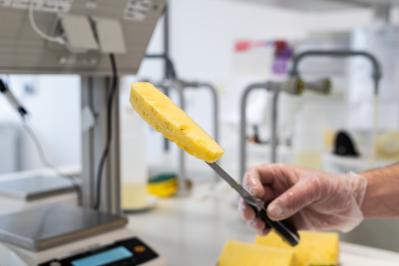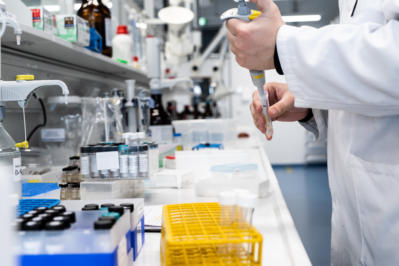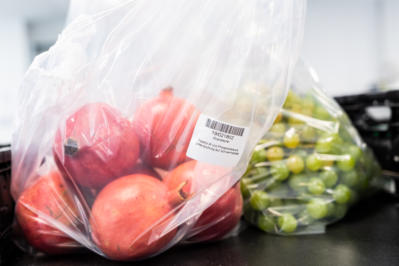
Analysis of Fruits & Vegetables
Fruits and vegetables are the basis of a balanced diet. Their quality has a direct impact on our health. From grower to consumer, the quality of fruits and vegetables can be affected by pollution or contamination during processing, storage, packaging, and transportation.
To meet consumer, retail and regulatory expectations, growers use a range of inspection measures to ensure produce is free of defects, insects, and mold.
With our large network of accredited laboratories in Europe, North America, Asia, and Israel, we make an important contribution to the safety of fruits and vegetables.
Challenge for producers and distributors of fruits and vegetables
Producers and distributors of fruits and vegetables face several challenges to bring safe and high-quality products to market.
Storage & Temperature
In order to be able to offer products such as apples and carrots regardless of the season, producers and distributors often store them. To maintain freshness and quality, certain storage conditions such as the right temperature and humidity must be ensured. Improper storage conditions can lead to rotting fruits and vegetables or to loss of flavor and quality.
Pest infestation
A major challenge with fruits and vegetables is also pest infestation. Pests such as mites, caterpillars and aphids can cause damage to fruits and vegetables, as well as transmit diseases. Therefore, measures are taken to control them, which often include chemical agents such as insecticides. Insecticides (as well as biocides, herbicides and fungicides). The application as well as the maximum residue levels of pesticides are precisely regulated in numerous EU regulations. For example, the maximum residue levels specified by the EU may not be exceeded on fruit and vegetables. According to EU organic regulations, no synthetic chemical pesticides may be used on organic fruit and vegetables. However, certain plant, animal, microbial or mineral pesticides may be used.
Nutrients & vitamin content
Another important consideration with fruits and vegetables is nutrient and vitamin content. If the intake is too low, people will suffer from deficiency symptoms. But the exact values for nutrient and vitamin content depend on certain factors such as climate, origin, soil, fertilization and sunlight. A regular examination of the contents shows whether, for example, fertilization needs to be adjusted or the location is optimally chosen.
Among the particularly challenging fruit and vegetable varieties are:
- Berries
- Grapes
- Apples
- Bananas
- Avocados
- Mango
- Lettuce
- Tomatoes
- Cucumbers
- Potatoes
- Peppers

Necessary tests for the analysis of fruit and vegetables
Residues and Contamination
Residue analysis is an important part of routine self-monitoring for fruits and vegetables. Produce must be tested regularly for residues of pesticides, which are commonly used in agriculture to kill pests or weeds. The maximum levels for pesticide residues on fruit and vegetables are regulated in Regulation (EC) No. 396/2005. If the maximum levels are exceeded, the products are not considered marketable and consumer protection is not guaranteed.
Furthermore, the products must be tested for pollutants such as phosphorus and nitrogen, which can enter fruit and vegetables using fertilizers.
Chlorate and perchlorate are used to disinfect water and can remain as residues, for example, from washing fruits and vegetables. Regular intake of these substances poses a health risk, so binding maximum levels apply in the EU. The maximum levels for chlorate can be found in Regulation (EU) 2020/749 and the maximum levels for perchlorate can be found in Regulation (EU) 2020/685.
Contaminants also play a key role in the assessment of consumer protection for fruit and vegetables. For example, fumonisins are commonly found in corn and patulin in apples. The examination of certain endangered products for mycotoxins is a central point of analysis with regard to safe marketing.
Heavy metals, for example, enter the environment through industrial processes and can accumulate in plants. For example, cadmium is found particularly frequently in mushrooms and lead in leafy vegetables. Regulation (EU) 2023/915 sets maximum levels for heavy metals in fruit and vegetables. It also sets maximum levels for other contaminants such as mycotoxins, dioxins and PCBs and PAHs.
Microbiological Contamination
Microbiological contamination can cause serious illness in consumers and should be taken into account in self-monitoring. In addition, certain microorganisms affect the quality of fruits and vegetables as they can lead to spoilage.
Salmonella, shigella and E.coli, for example, get onto fruits and vegetables through fertilizing or washing with water contaminated with fecal matter.
Molds are among the most common spoilage pathogens in fruits. Contamination can occur, for example, through dead plant parts or through the soil, and certain storage conditions favor growth and can lead to rot and spoilage.
Regular microbiological testing can provide qualitative and quantitative information on the microbiological status of the products and thus on quality and safety.
If fruits and vegetables are further processed (e.g. chopped), there is a risk of microorganisms entering the products during the processing steps. Therefore, cleaning and disinfection steps must be regularly checked for their effectiveness. Here, the laboratories of the Tentamus Group support you with training courses, audits and inspection of surfaces.
Sample Logistics
Tentamus Group laboratories have efficient sample logistics to provide you with results as quickly as possible. We offer sampling by qualified samplers of the accredited laboratories, as well as easy sample collection at your site.
Especially for microbiological analysis, correct sampling is of great importance.
Simply contact us to arrange an appointment and our competent logistics team will take care of the rest.

Relevant legal bases and directives
- Regulation (EC) No. 396/2005 of the European Parliament and of the Council (maximum residue levels of pesticides)
- Commission Regulation (EC) No. 2018/848 (EU Organic Regulation)
- Regulation (EC) No. 178/2002 of the European Parliament and of the Council (Basic Regulation)
- Commission Regulation (EU) No. 2023/915 (contaminants in food)
- Regulation (EU) 2020/749 Chlorate in foodstuffs
- Regulation (EU) 2020/685 Perchlorate in foodstuffs
Get in touch with our team:
hello@tentamus.com
+49 30 206 038 230
Overview of
laboratories offering analysis of fruit and vegetables
The following laboratories from the Tentamus Group offer analyses of fruits and vegetables:
This could also be of interest to you:
Analyses
Residue analysis
Chemical analyses
Microbiological testing
Food testingProduct Categories
Baby food
Dried fruits
Legumes
Nuts
Marmalade and jam
Organic Products
Canned foodsOther Services